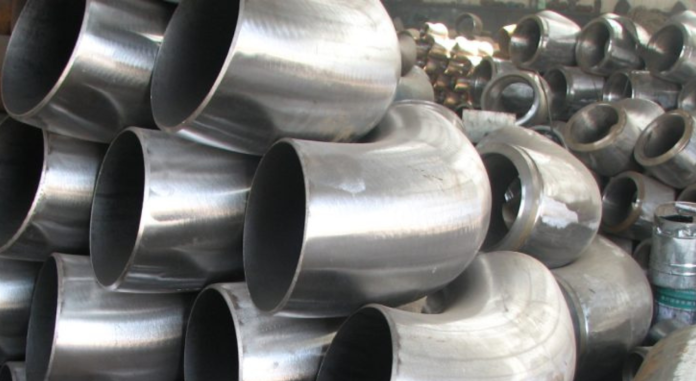Schedule 10 steel pipes are a critical thing in diverse industrial applications, usually due to their lightweight design and versatility. The thickness of Schedule 10 pipes varies depending on their diameter, usually starting from 0.065 inches for smaller diameters to approximately 0. 140 inches for large ones. This thin-walled structure makes them appropriate for low-pressure structures where weight and versatility are crucial. This style of thickness makes Schedule 10 pipes ideal for low-pressure structures.
The term “scheduled” refers to a standardized class that shows the wall thickness relative to the outer diameter. Schedule 10 pipes are designed for lower strain packages, making their thin partitions sufficient for transporting beverages and gases without immoderate weight or material fees. This detail helps you know about how thick is schedule 10 steel pipe thickness. While the thickness is less than that of Schedule 40 and Schedule 80 pipes, it still gives vital durability for various applications in plumbing, HVAC, and other industries.
Common Applications Where the Thickness of Schedule 10 Steel Pipes is Advantageous
This article explores the common applications wherein the benefits of Schedule 10 steel pipe thickness are maximum stated.
Water Supply Systems
One of the number one applications for Schedule 10 steel pipes is in water supply structures. Due to their thin partitions, these pipes offer a cheap solution for transporting water in both residential and commercial settings. Their lightweight nature simplifies transportation and installation, which may drastically reduce hard work expenses. Additionally, the multiplied inner diameter furnished with the aid of the thin walls lets in for better drift costs, making Schedule 10 pipes a favored choice for efficient water distribution.
HVAC Applications
Schedule 10 metallic pipes are typically used in heating, air flow, and air conditioning (HVAC) systems. Those pipes are properly desirable for chilled water distribution and other low-strain programs within HVAC systems. The skinny wall thickness offers adequate go-with-the-flow capability at the same time as minimizing weight, which is specifically tremendous in retrofit initiatives in which structural issues can also restrict options. schedule 10 pipes to ensure green temperature management and a brief reaction to changes in heating or cooling demands.
Fire Protection Systems
In fire protection structures, Schedule 10 steel pipes function as an effective approach to transporting water for fire suppression. The thin walls provide enough strength to address low-pressure requirements while being lightweight enough for clean installation. Their reliability and durability in hard conditions cause them to be a popular preference in industrial and commercial homes. Furthermore, the pipes’ capability to quickly deliver water to the required locations is crucial for effective fireplace safety measures.
Natural Gas Distribution
Natural gasoline distribution structures regularly make use of Schedule 10 steel pipes due to their favorable residences for transporting gasoline underneath low stress. The thin wall thickness ensures that the pipes can deal with the desired drift prices while minimizing fabric expenses. Moreover, their lightweight layout simplifies set-up in tight areas, making them perfect for residential and business applications. Schedule 10 pipes offer a reliable way of delivering natural gas successfully and thoroughly.
Plumbing Systems
Schedule 10 Metal pipes are frequently determined in plumbing structures, in which they serve as a fee-effective answer for transporting water and wastewater. Their thin wall thickness allows for extra installation flexibility, particularly in residential and industrial plumbing applications. The lighter weight of Schedule 10 pipes makes them simpler to handle and install, lowering labor fees. Those pipes can effectively manage the flow of water and wastewater in various plumbing configurations, ensuring dependable performance.
Industrial Applications
In business settings, Schedule 10 metal pipes are utilized for various low-strain applications. Their thin walls cause them to have a cost-effective desire for transporting substances in manufacturing and production environments. These pipes can be used for transporting air, water, and even positive chemical compounds, depending on the particular necessities of the operation. The lightweight nature of Schedule 10 pipes allows for efficient dealing with and installation, contributing to usual productivity in commercial centers.
Oil and Gas Industry
The oil and gasoline industry also employs schedule 10 metal pipes for specific packages, in particular in low-stress eventualities. These pipes may be used for transporting fluids, which include water and crude oil, in numerous components of the manufacturing method. The thin partitions offer good strength while minimizing weight, making them suitable for use in faraway locations where delivery and set-up logistics can be challenging. Schedule 10 pipes to ensure dependable operation in this traumatic enterprise.
Irrigation Systems
Schedule 10 Steel pipes are commonly used in irrigation structures, in which green water transport is crucial for agricultural applications. The thin wall design permits better glide fees, ensuring that water is sent efficaciously throughout fields. Their lightweight nature makes setup less complicated, especially in huge agricultural settings. Schedule 10 pipes offer a durable and cost-effective answer for turning in water to crops, supporting efficient irrigation practices.
Conclusion
Schedule 10 metal pipes offer several advantages throughout various programs due to their thin wall thickness. From water delivery structures to HVAC and fire safety, these pipes offer dependable performance in low-pressure situations. Their lightweight nature enables easy installation and fee financial savings, making them a preferred preference in many industries. Information on the common applications of Schedule 10 metal pipes permits engineers and contractors to make knowledgeable decisions, ensuring top-of-the-line overall performance and performance in their initiatives.














